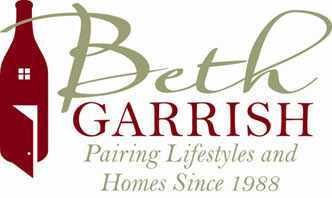Mar 27, 2017 | Homeowners
 Like any good business plan, looking ahead and planning for home renovations will help you to stay on track – ensuring your home sells in any market, even if that’s 15-25 years from now. The most effective way to fund home renovations is to establish an annual budget that will go toward future improvements. This way, you can accomplish regular upkeep and preserve your home’s marketability.
Like any good business plan, looking ahead and planning for home renovations will help you to stay on track – ensuring your home sells in any market, even if that’s 15-25 years from now. The most effective way to fund home renovations is to establish an annual budget that will go toward future improvements. This way, you can accomplish regular upkeep and preserve your home’s marketability.
This of it as a five-year home renovation plan, to be reviewed annually and updated in the fourth year. Planning in this way will translate positively to your overall financial health.
Cornerstones for developing your plan:
- Decide on the major renovations you foresee in the next five years such as kitchen, bathroom(s), heating and air conditioning, windows and/or roof.
- Prioritize and establish rough budgets for each.
- Establish an automatic payroll deduction plan that arranges for a set amount each week to be deposited into a savings account or tax-free savings account.
- Review your priorities each year and adjust both your savings contribution and the list of projects.
- In the fourth year, re-write your plan for another five years.
Have questions?
Email Beth for more information
Mar 22, 2017 | Real Estate 101

1Working with a professional provides peace of mind. REALTORS® adhere to a strict code of ethics, are insured and are committed to ongoing education. They have intimate knowledge of sales and trends in the local marketplace and their knowledge of contract law also ensures the paperwork is handled correctly.
2Get information on new listings first. Not only do REALTORS® have access to a multiple listing service, REALTORS® are also invited to exclusive “agent only” open houses that let them find out what’s on the market before anyone else.
3Market that property! Your REALTOR® will distribute information about your property to their network of other agents, industry partners, preferred clients and the public. This is a great help towards getting the word out that your home is for sale.
4They know your competition. When selling your home, your REALTOR® is the best person to provide you with up-to-date information on the marketplace. From their experience doing hundreds of transactions, they know the price and features of competing properties.
5Find the right property for your specific needs. REALTORS® can help source locations and homes that are specific to your needs. They also know where schools, hospital and amenities are located, and can advise on neighbourhood discrepancies.
6Help you to evaluate a property. REALTORS® know which inspections should be conducted on potential purchases including checks for termites, dry rot, and asbestos. They can also help you gain access to important information such as the title and sales history of the property. If issues are contained in the title report, a REALTOR® can assist you to resolve them before problems arise.
7Negotiating: Secure the best price for your home. REALTORS® are expert negotiators, and their experience can equate to thousands of dollars in your pocket. Along with helping you get the best price, they can assist with date of possession, and inclusion or exclusion of repairs, furnishings or equipment. The help of a REALTOR® will maximize your return and give you peace of mind.
8Get the best information on financing options. A REALTOR® can help you understand the carious financing options available and refer you to a qualified lender or mortgage professional/broker.
9Know what government programs can help. Your REALTOR® knows the most current incentives and rebates that help homebuyers. Government offerings on land transfer taxes, home buyer’s tax credits and buyer’s plans for first-time homeowners can help save thousands of dollars.
10Help you work with the best partners. Finding the right real estate lawyer, property inspector, tradesmen, movers and other service providers can be time consuming. A REALTOR® will have a list of people that they can recommend, saving you time and worry.
Need a REALTOR®?
Email Beth for your Real Estate needs
Content provided by:

Mar 20, 2017 | Market News, Real Estate 101
Vancouver, BC – March 15, 2017. The British Columbia Real Estate Association (BCREA) reports that a total of 6,580 residential unit sales were recorded by the Multiple Listing Service® (MLS®) in February, down 31.7 per cent from the same period last year. Total sales dollar volume was $4.53 billion, down 39.7 per cent from February 2016. The average MLS® residential price in the province was $688,117, an 11.7 per cent decrease from the same period last year.

“Consumer demand has returned to a more typical level over the first two months of the year,” says Cameron Muir, BCREA Chief Economist. “While the home sales have declined nearly 32 per cent from the extraordinary performance of a year ago, last month’s activity reflected the average for the month February since the year 2000.”
The average MLS® residential price for the province was down nearly 12 per cent from a record $779,419 in February 2016. However, this change is largely the result of a decline in the proportion of provincial sales originating from the Vancouver region. Last month, 37 per cent of BC home sales occurred in the Real Estate Board of Greater Vancouver’s area, compared to 44 per cent in February 2016.
Year-to-date, BC residential sales dollar volume was down 38.5 per cent to $7.3 billion, when compared with the same period in 2016. Residential unit sales declined 28.5 per cent to 11,067 units, while the average MLS® residential price was down 14.1 per cent to $660,943.
Copyright British Columbia Real Estate Association. Reprinted with permission.
Mar 17, 2017 | Homeowners
 Decorative moulding is one of the most eyecatching ways to upgrade a room. You’re probably accustomed to seeing standard baseboard moulding installed where your floor meets the wall. But, there are many other types.
Decorative moulding is one of the most eyecatching ways to upgrade a room. You’re probably accustomed to seeing standard baseboard moulding installed where your floor meets the wall. But, there are many other types.
For example:
• Crown moulding for ceilings.
• Panel moulding for a southern colonial look.
• Chair rail moulding, which is very distinctive on walls.
• Apron moulding for window sills.
• Entablature moulding for above doorways.
Decorative moulding comes in a dizzying array of styles. Interior designers recommend taking home samples, just as you would take paint swatches, to test out ideas. In addition to style choices, you also need to select the material you prefer.
Moulding can be made of wood, plaster, laminate, composite, fiberboard, vinyl and other materials. There are pros and cons to each. Generally, the higher-priced options are more attractive and durable. (If you select wood, you typically have the additional option of “finished or unfinished”. If you choose unfinished, you of course, will be painting it yourself.)
Choosing the right moulding for the look you want is the toughest part of the job. Installation is a lot easier and most people with DIY experience have no problems. So if you want to add some magic to your walls, consider decorative moulding. It can turn a room from standard to stunning.
 Like any good business plan, looking ahead and planning for home renovations will help you to stay on track – ensuring your home sells in any market, even if that’s 15-25 years from now. The most effective way to fund home renovations is to establish an annual budget that will go toward future improvements. This way, you can accomplish regular upkeep and preserve your home’s marketability.
Like any good business plan, looking ahead and planning for home renovations will help you to stay on track – ensuring your home sells in any market, even if that’s 15-25 years from now. The most effective way to fund home renovations is to establish an annual budget that will go toward future improvements. This way, you can accomplish regular upkeep and preserve your home’s marketability.




 Decorative moulding is one of the most eyecatching ways to upgrade a room. You’re probably accustomed to seeing standard baseboard moulding installed where your floor meets the wall. But, there are many other types.
Decorative moulding is one of the most eyecatching ways to upgrade a room. You’re probably accustomed to seeing standard baseboard moulding installed where your floor meets the wall. But, there are many other types.